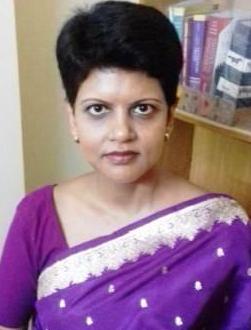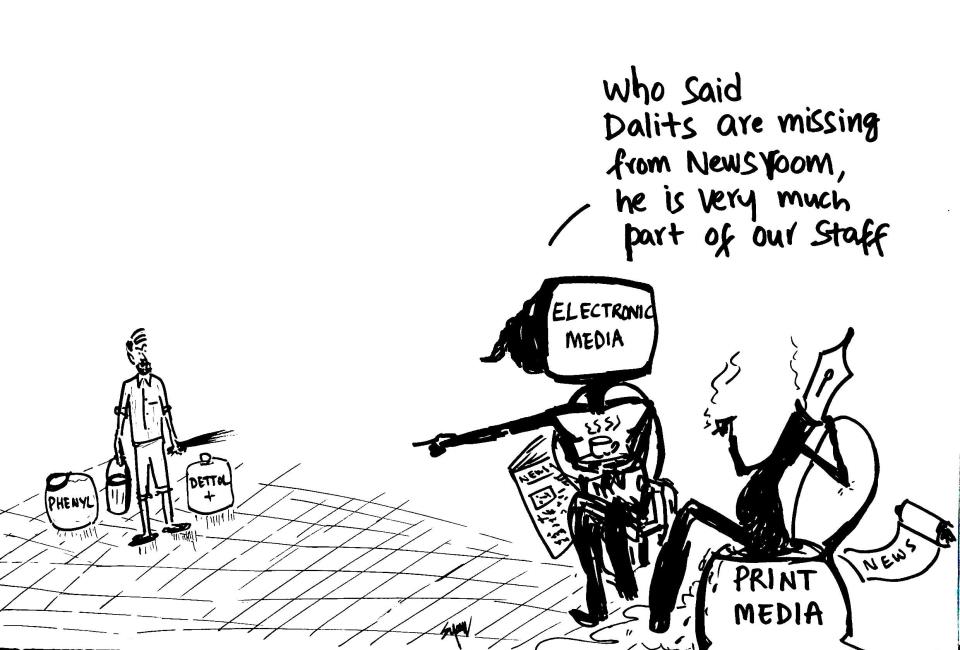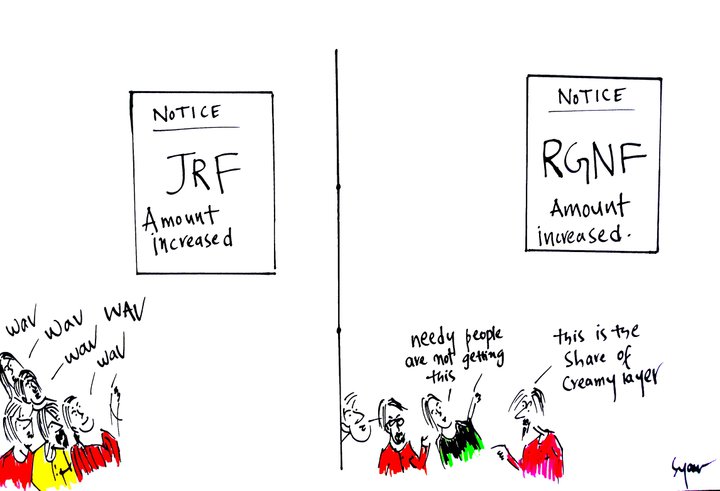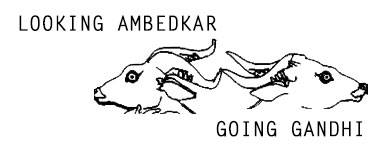Dr Anuradha Bele
 My deepest gratitude to all the peasants, and especially to the farmers of Punjab.
My deepest gratitude to all the peasants, and especially to the farmers of Punjab.
Babasaheb Dr. B.R. Ambedkar once said that those who don’t know history can’t make history. In the light of this quote, this article aims to understand the history of jats and their current socio religious politics and reiterate the profound fact to the readers that the freedom in the truest sense is possible only if the caste structure is dismantled and that can be made possible only if multitude castes of Shudras and Ati Shudras walk under a common umbrella towards common destiny, i.e Buddhism.
Introduction
The term ‘Hindu’ is a myth, created by Muslims to address the people on the other side of the Indus river. So the so-called Hindu society is just a collection of castes.[1] The Brahmins, and Brahmin converts to Islam (Ashraf Muslims, upper caste Muslims), the sacerdotal castes, were most numerous wherever the soil was fertile and the people ignorant and superstitious.[2] Babasaheb Dr. B.R. Ambedkar had explained that the Shudras, the Tribes and the Untouchables are natural allies, and could use their numerical strength to bring down the Brahmanical economic order and subsequently the social order i.e. the caste system. However, he also bemoaned the fact that the Shudra still believes in the supremacy of the graded inequality created by the Brahmin and while the Shudra is anxious to pull down the Brahmin, the Untouchables rising to their level is not acceptable to them.
They are ready to suffer the humiliations heaped upon them by the Brahmins rather than join the Untouchables, and thus work as the police force of the Brahmins.[3] History shows that the ruling castes of India have consistently used the Shudra and Ati-Shudra castes for their personal gains without devolution of power to them. Labels to accommodate them like ‘Jai Jawan Jai Kisan’ have been used since 1960s, yet the average urban Brahmin Bania has reaped the benefits of education and government jobs, while the rural Jats fulfilled their caste role of producing grains for them, while seeing no channels of upward mobility and social anonymity.
The Jats, classified as Shudras in the caste system, are leading the current farm laws agitation. Sikhism has its own caste inequalities, which people are reluctant to talk about. Babasaheb has called Sikhism a militant form of Hinduism.[4]As long as the Jats, who constitute almost two-thirds of the Sikhs, continue to believe in the graded inequality of the caste system, they will remain a part of the Hindu fold, and the current agitation will not shake the caste system, which is the rock on which the Hindu society is built.[5]The Jats need to reclaim their Buddhist roots and challenge the caste system, leaving the myths of the Brahmins behind, a state which has dehumanised them and kept them on the edge of hopelessness. [6]
Who are the Jats?
Undivided Punjab and Kashmir were all Buddhist centres in pre-Islam days. Buddha himself had walked to Punjab, preaching his message of equality, love and compassion and stayed and delivered important sermons in Kurukshetha, Kaithal, Sialkot, Asrur in Gujranwala, Sugh and Kulu. The dialogue between Greek King, Milinda and Bhikku Nagasena, recorded in Milindpanha took place at Sialkot. Kanishka and Harsha flourished in united Punjab and Asoka started his career as a viceroy of Taxila, which is in present-day Rawalpindi district. The Fourth Buddhist Council was held by Kanishka in Jalandhar.[7] The numerous strong agricultural and pastoral tribes, known as Jats were thus, Buddhists. The word ‘Jat’ can be derived from ‘Saka’, according to Sir Alexander Cunningham, who studied the coins of Kushanas and Sakas.[8] Huien Tsang called the Jats as ‘shramanik Buddhists’.[9] The Jats spoke Jataki, the local language of south eastern Punjab and Multan.[10] Jataki is related to Pali-Prakrit language. The Jat tribes are also considered to be the origin of the Roma Gypsies.[11]
The Jats, Ahirs, Gurjars and Rajputs are of common ethnic origin, but not all tribes were anointed as Rajputs by the Brahmins. Only the select few were made Rajputs, the rest remaining Jats, Ahirs and other commoners. This was because the Brahmins knew that if the people were not kept bickering with each other, they might unite and overthrow the oppressive Brahmin rule. The newly elevated Rajput caste were then used to massacre the Buddhists in the counter revolution, which stamped out Buddhism from the minds of the people of Punjab and elsewhere. Chachnama, describing the events of 8th century A.D. Sind talks about the ascent of the Brahmin minister, Chach to the throne of Sind and his lineage ends with the death of his son, Dahir. Hence, Brahminism was reviving ,viharas were being converted into temples and temple worship began, especially during the Gupta period from late 3rd century to 6th century. The Buddhists suffered under the Brahmin rule of Chach and then of Kalar, and hence, supported the Arab invasion in Sind, Punjab around 8th century. They then converted to Islam to escape the Brahminical tyranny and this explains the huge numbers of Musalman Jats in undivided Punjab.[12] They formed 56% of the rural population of the undivided Punjab whereas the Hindus as traders were urban. [13] For example, in 1800s in Western Punjab, two thirds of the residents of the town were Hindus. 91% of the population was rural and of that, 92% was Musalman. [14]
Brahmin in Jat lives
The average Hindu peasant, into which fold the non- Muslim Jat was appropriated, was said to till his land, feed his Brahmin and let the womenfolk worship at the shrine of the local deity.[15] The site to build the house and the house itself could only be built after the sanction of the priest. A Jat could not build his house beyond the boundary of the settlement site indicated by the existence of a shrine of the village god (bhumia). Moreover, the site of the ancestral house being sacred could not be abandoned. Furthermore, the extension of a settlement on the south or west was also forbidden, the two directions being considered of ill omen. South is associated with death (Yama) and west with darkness (Nishada). [16]This clearly shows the authority that the Brahmins wielded, unlike the lowly image that is portrayed in the academic references used to study Brahmins in Jat lives in contemporary times.[17] If the Brahmin was treated as a menial, what manual labour was he involved in? Was he asked to collect the grains for his food by sieving the dung of the cow, as was told to the Untouchables? Were the daily, weekly, monthly, yearly rituals not practised through a Brahmin, and was he denied his fees for being an intermediary between the peasant and their God? Punjab has the highest SC population of 31.94% in the country [18] and Delhi, the centre of power, which again has high Jat concentration since 14th century,[19] has one of the highest proportion of Brahmins at 12%- 14%. [20]
The Brahmin used the time tested strategies of fabricating a myth of lofty origin of the powerful tribes into the cult of Rama or Krishna or Shiva, so that they would give them charity. The Jats are supposed to have originated from Shiva’s locks of hair. [21]The pedigree of the ones lower in the caste system would breed discontent against the ones higher in the ladder and keep the Brahmins safe from a rebellion against their tyrannical rule.
Sikhism and Caste
Caste exists among the Sikhs despite its rejection by the Sikh Gurus. The caste analysis of Sikhs, based on 1881 census figures, produced a pronounced majority in favour of the Jats (more than 66 per cent of the total community). The second largest constituent was that of the Tarkhans (carpenters) with 6.5 per cent. Other constituents in excess of two per cent were two outcaste groups of Chamars at 5.6 per cent and Chuharas (2.6 per cent). The upper caste of Aroras were at 2.3 per cent and the Khatris at 2.2 per cent.[22] The 10 Gurus were all Khatris. The Sikh King, Ranjit Singh was a Jat.
Need for reconciliation: Common road and destiny
The one social reformer who set an example of practising what he preached was Buddha. In his time, irrespective of caste, a person ordained as a Bhikku held the same rank that a Brahmin did in Brahminism. In his Order, over which he had complete control, he ignored all advantages and disadvantages arising from birth, occupation and social status. He encouraged people to save themselves through knowledge, wisdom and love, his role was that of a teacher only. [23]
The religion of welfare for all is that of Buddhism and it leaves no one behind, be it a Jat Punia or a Dalit Noodep. The peasant has borne the brunt of debt, suicides, addictions, cancers and now, camping out on the streets to make themselves heard. These are the ‘wrongly settled conditions which will never settle’ that Babasaheb quoting Thomas Paine warned us about [24], and we need to strike at the root cause of this condition and annihilate caste.
The farm protests is the right time to start acknowledging and dismantling the contradictions within the Hindu society and reclaim the path of Buddha and Babasaheb. By leaving the caste framework completely, and acknowledging our Buddhist roots of brotherhood, we need to awaken the spirit of Buddhism, not in words or symbols alone, but in energetic action. To recognise the common oppressor and build solidarities across the mass of people by nullifying the constructs thrust upon us, and embracing the unity of humanity, we need to follow the path of fraternity and equality given by Buddha and Babasaheb.
~
References
1. Dr. B.R.Ambedkar, Annihilation of Caste, Volume 1, Page 50, Babasaheb Ambedkar Writings and Speeches
2. Septimius Smet Thorburn, Musalman and Money-Lenders in the Punjab, Page 28
https://www.indianculture.gov.in/rarebooks/musalmans-and-money-lenders-punjab
3. Dr. B. R. Ambedkar, Untouchables or Children of India’s Ghettos, Volume 5, Chapter 11,Page 102, Dr. Babasaheb Ambedkar Writings and Speeches
4. Dr. B. R. Ambedkar, Untouchables or Children of India’s Ghettos, Volume 5, Chapter 24,Page 308, Dr. Babasaheb Ambedkar Writings and Speeches
5. Dr. B. R. Ambedkar, Untouchables or Children of India’s Ghettos, Volume 5, Chapter 17,Page 170, Dr. Babasaheb Ambedkar Writings and Speeches
6. Bedide (Kuffir), Naren. Farmers and their unrecognized humanhood. Prabuddha: Journal of Social Equality, [S.l.], v. 4, n. 1, p. 23-25, feb. 2020. ISSN 2576-2079. Available at: . Date accessed: 06 mar. 2021.
7. D.C. Ahir, Buddhism in Punjab, Haryana and Himachal Pradesh- Chapter 1- Buddha’s Visit to Punjab; Chapter 8- Some Archaeological Remains
8. Sir Alexander Cunningham, Coins of the Indo-Scythians, Sakas, and Kushans, page 33, Indological Book House, Varanasi, India, 1971, first published in 1888
9. https://countercurrents.org/2021/01/jats-a-brief-history/
10. Anath Bandhu Mukerji, Cultural Geography of the Jats of the Upper Doab, India -Louisiana State University, LSU Digital Commons
11. Danger! Educated Gypsy: Selected Essays By Ian Hancock, Page 76
12. Rajput Period Was Dark Age of India | Velivada
13. Malcolm Lyall Darling. I.C.S.,The Punjab Peasant in Prosperity and Debt, Preface, xvi
14. Septimius Smet Thorburn, Musalman and Money-Lenders in the Punjab, Page 18
https://www.indianculture.gov.in/rarebooks/musalmans-and-money-lenders-punjab
15. Septimius Smet Thorburn, Musalman and Money-Lenders in the Punjab, Page 15
https://www.indianculture.gov.in/rarebooks/musalmans-and-money-lenders-punjab
16. Anath Bandhu Mukerji, Cultural Geography of the Jats of the Upper Doab, India -Louisiana State University, LSU Digital Commons
17. https://www.india-seminar.com/2001/508/508%20surinder%20s.%20jodhka.htm
18. http://welfarepunjab.gov.in/Static/SCPopulation.html#:~:text=The%20Scheduled%20Caste%20population%20in,Scheduled%20Caste%20population%20of%20India.
19. Anath Bandhu Mukerji, Cultural Geography of the Jats of the Upper Doab, India -Louisiana State University, LSU Digital Commons
20. https://www.dailypioneer.com/2013/india/fight-for-brahmin-votes-intensifies.html
21. https://www.jatland.com/home/Origin_of_Jats_from_Shiva%27s_Locks#:~:text=Brahmanical%20legends%20of%20origin%20of%20the%20Jats&text=From%20these%20were%20descended%20the,the%20Jats%20from%20the%20Shiva.
22. Sewa Singh Kalsi, Sikhs and Caste – A Study of the Sikh Community in Leeds and Bradford, Page 80
23. Dr. B. R. Ambedkar, Volume 3, Chapter 8, Dr. Babasaheb Ambedkar Writings and Speeches
24. Dr. B.R. Ambedkar, Volume 15, Section VII, Page 972, Dr. Babasaheb Ambedkar Writings and Speeches
~~~
Dr Anuradha Bele is an electronics engineer and a veterinary doctor with a degree in management. She can be reached for references at anuradha.bele@gmail.com










